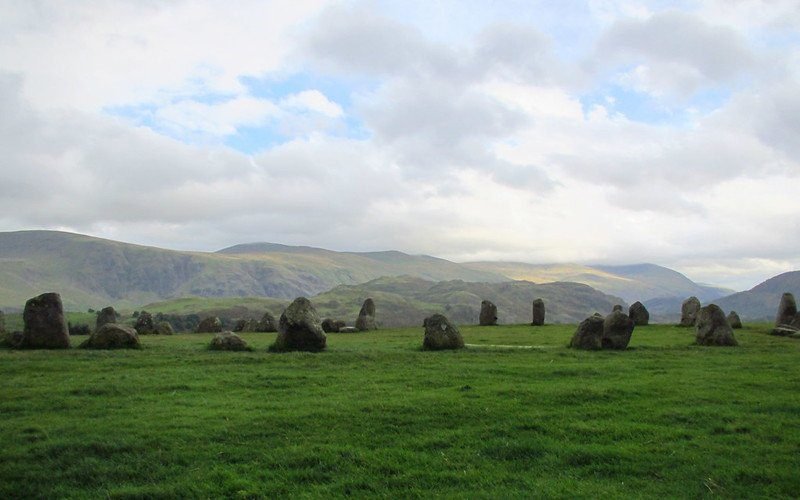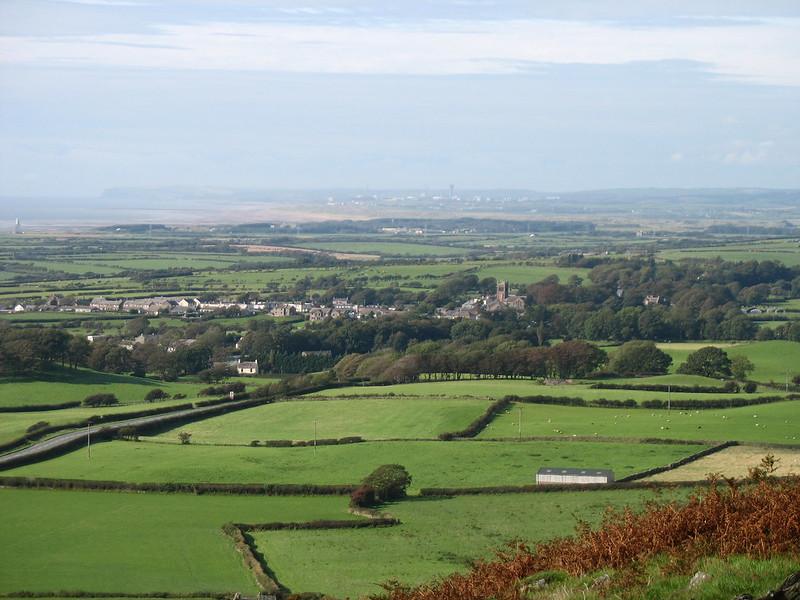Introduction to Castlerigg
Located in the picturesque region of Cumbria, Castlerigg is an ancient stone circle that dates back to the Neolithic period. Situated near the vibrant town of Keswick, this archaeological marvel is set against a backdrop of majestic mountains and lush landscapes, making it an appealing destination for both history enthusiasts and casual tourists.
The site comprises 38 standing stones, arranged in an elliptical shape that spans approximately 30 meters in diameter, reflecting the remarkable engineering and spiritual beliefs of the people who constructed it over 4,000 years ago.
Castlerigg, known for its historical significance, emerges as one of the earliest and most prominent stone circles in Britain. It plays a crucial role in our understanding of prehistoric culture, offering insights into the social and ceremonial practices of Neolithic communities.
The location was likely chosen for its visibility and accessibility, providing a communal space for rituals and gatherings. As visitors traverse the circular layout of the stones, they are often struck by the ethereal atmosphere that pervades the site, which has been preserved, allowing for reflection on the lives of those who once inhabited this region.
The archaeological context of Castlerigg places it among other significant prehistoric sites, emphasizing its importance within the broader landscape of Neolithic Britain.
As one of the best-preserved stone circles, it continues to attract researchers and historians eager to uncover the mysteries of the past. Moreover, Castlerigg has become a popular spot for photographers and nature lovers, drawn by the stunning scenery and the circle's enchanting aura.
With an admission that is free and open to the public, it invites everyone to experience the rich tapestry of history embedded within its stones.
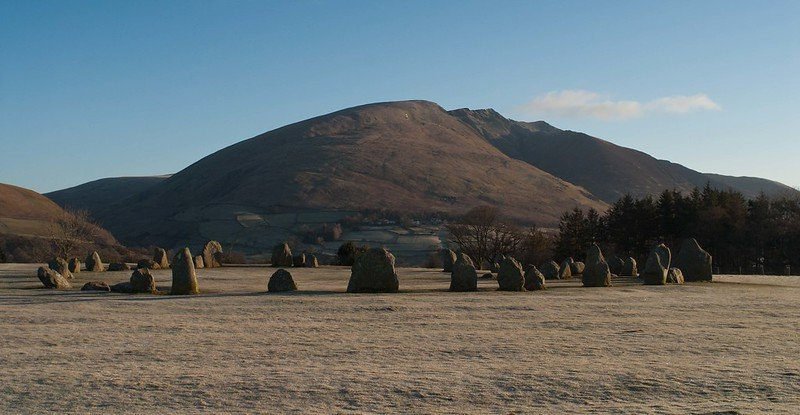
Geographical Overview
Cumbria, located in the northwest of England, is renowned for its dramatic landscapes and rich historical significance. The region encompasses the Lake District National Park, a UNESCO World Heritage Site celebrated for its stunning natural beauty and outdoor activities.
Among the numerous sites within Cumbria’s diverse terrain lies Castlerigg, a prehistoric stone circle situated just a short distance from the picturesque town of Keswick. This unique location not only adds to the cultural richness of Castlerigg but also offers visitors breathtaking views of the surrounding hills and lakes.
The geographical features of Cumbria are characterised by rolling hills, deep valleys, and shimmering lakes. Prominent fells, such as Skiddaw and Helvellyn, dominate the skyline, providing a magnificent backdrop for the stone circle.
This elevation not only contributes to the aesthetic appeal but also positions Castlerigg as an important site for historical astronomy; the alignment of the stones suggests a deep connection to celestial events. The natural landscape is further enhanced by the presence of the nearby Derwentwater Lake, which draws both nature enthusiasts and those seeking spiritual connections to the land.
Moreover, the proximity of Castlerigg to the Lake District improves the overall visitor experience by offering a plethora of recreational activities. Visitors can engage in hiking, photography, and sightseeing, all within a landscape steeped in ancient history.
The serene environment created by the lakes and fells provides a perfect setting to explore the significance of the stone circle, allowing individuals to reflect on the historical context of early Neolithic communities.
Indeed, this geographical positioning not only enriches the heritage of Castlerigg but also invites guests to immerse themselves in the captivating natural beauty that defines Cumbria.
The Origins of Castlerigg Stone Circle
The Castlerigg Stone Circle, located near Keswick in the Lake District of Cumbria, is one of the most significant prehistoric monuments in Britain. It is believed to have been constructed around 3200 BC, placing its origins in the Neolithic period, a time when agrarian cultures began to emerge across Europe.
The precise date of construction, however, remains a topic of scholarly debate, as various theories suggest that the site may have undergone alterations and renovations over the centuries.
The stones used in the construction of Castlerigg are primarily sourced from the local volcanic rock known as rhyolite. This material contributes to the uniqueness of the site, as the stones display a variety of shapes and sizes, each weighing several tons.
The circle consists of 38 stones arranged in a rough ellipse, with the tallest stones reaching a height of approximately 2.5 meters. This careful selection of materials and their arrangement suggests that the ancient tribes who built the monument had a sophisticated understanding of their environment and architectural practices.
The purpose of the Castlerigg Stone Circle has provoked numerous theories among historians and archaeologists. Some propose that it served as a ceremonial site, possibly linked to religious rituals or community gatherings.
Others speculate that it functioned as an astronomical observatory, allowing ancient peoples to mark seasonal changes and celestial events. The alignment of certain stones with the rising and setting sun lends support to this interpretation.
In addition to these theories, Castlerigg's historical significance is underscored by its role as a communal marker for the surrounding tribes, offering a focal point for social and cultural identity.
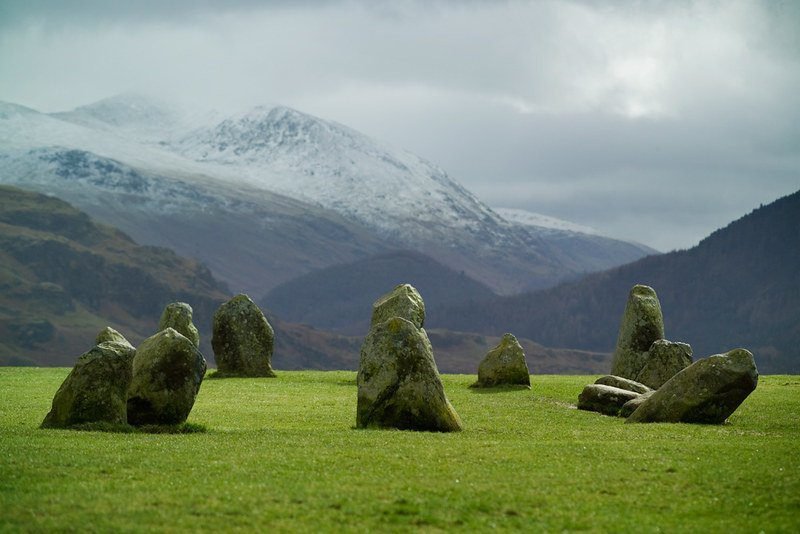
Exploring the Architecture of the Stone Circle
Castlerigg Stone Circle, located in the picturesque Lake District of Cumbria, presents an exquisite architectural marvel that captivates both historians and visitors alike. The stone circle encompasses a circular arrangement of 38 large stones, each varying in size, contributing to its distinct character.
The overall diameter of the circle measures approximately 33 meters, while the individual stones average about 1.5 to 2 meters in height. Such dimensions not only signify the scale of human effort involved in the construction but also enhance the visual impact when one stands within the circle, staring out at the grandeur of the surrounding landscapes.
One notable feature that sets Castlerigg apart from other stone circles is its orientation. The stones are arranged in an elliptical formation rather than a perfect circle, which suggests a calculated design reflective of astronomical considerations. This orientation aligns with the natural topography of the site and likely serves a ritualistic purpose.
Additionally, the northern part of the circle features a set of larger stones, which may have functioned as markers for solar events, such as solstices or equinoxes. The careful selection and placement of these stones further imply a sophisticated understanding of the relationship between nature and spirituality.
Moreover, the craftsmanship exhibited in the stones themselves reveals much about the era in which Castlerigg was constructed, believed to be around 3200 BC. The use of local volcanic rock adds to the geological significance of the site while enhancing its aesthetic appeal.
Some stones display natural weathering patterns that have developed over millennia, which adds to the overall mystique of the site. Such intricate architectural elements make Castlerigg not just a stone circle, but a testament to the ingenuity and spiritual aspirations of its prehistoric builders.
Cultural Significance and Myths
Castlerigg stone circle, situated in the enchanting landscape of Cumbria, is not merely an assemblage of rocks; it embodies a wealth of cultural significance and rich myths that intertwine with the local heritage.
This ancient monument has long been a focal point for various legends, many of which are deeply rooted in the traditions of the area. As one of the earliest stone circles in Britain, Castlerigg carries stories that reflect both its historical uses and its evolving role in contemporary spiritual practices.
Local folklore often associates the site with a multitude of tales that speak of the supernatural, including accounts of ancient rituals aimed at honouring deities or the earth itself. These legends significantly contribute to the mystique of Castlerigg, suggesting that it may have served as a ceremonial ground for communal gatherings or religious observances in ancient times.
The connection of the site to agricultural practices is particularly noteworthy, as it is believed that the positioning of the stones was intentional, guiding ceremonies that celebrated the changing seasons and the fertility of the land.
Furthermore, Castlerigg has gained modern significance as a site of attraction for contemporary pagan practices. Many modern druids and neolithic spiritualists visit the stone circle to perform rituals and celebrate ancient traditions, allowing them to connect with the past while reinforcing their spiritual practices. The circle's enduring presence in both local and broader cultural narratives makes it a bridge between the ancient and the modern, facilitating a dialogue about heritage, spirituality, and identity.
In essence, Castlerigg stands not only as a mere monument but as a vital element of cultural tapestry, revealing the profound relationship that communities have had with this remarkable site throughout the ages. Its myths and significance continue to resonate, inviting exploration and reflection on the role of ancient sites in modern-day consciousness.
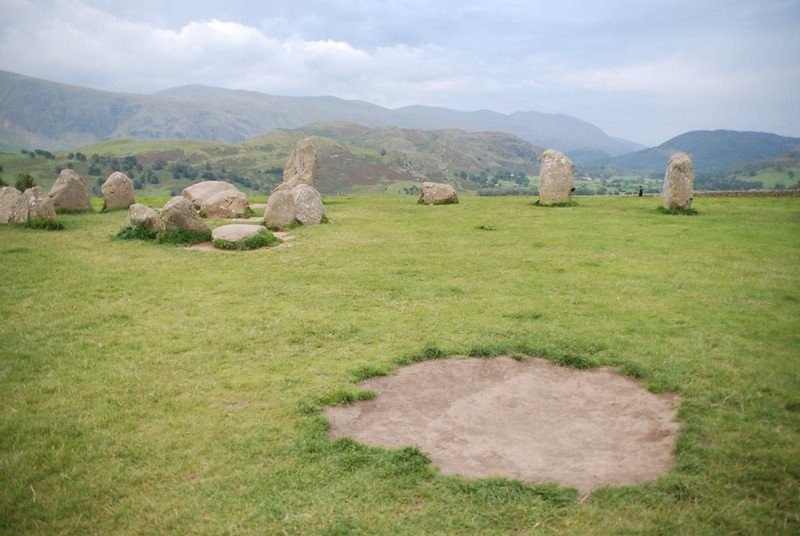
Visitor Experience: What to Expect
Visiting Castlerigg Stone Circle, nestled in the picturesque landscape of Cumbria, offers a remarkable journey into the region's ancient past. As one of the most significant prehistoric monuments in Britain, visitors can expect profound historical significance, stunning scenery, and a tranquil atmosphere.
The site is particularly enchanting during the early morning or late afternoon when the soft light enhances the beauty of its standing stones and the surrounding hills.
When planning a visit, it is advisable to check the weather conditions, as this will greatly affect your experience. The site is open year-round, but the best time to visit is during the late spring to early autumn months when the weather is typically milder and more conducive for exploration.
Early risers will appreciate the peaceful solitude of the site at dawn, while sunsets create a magical ambience that many photographers seek. Castlerigg offers limited facilities; hence, visitors should come prepared.
There are no cafes or shops on-site, so bringing a packed lunch and sufficient water is recommended. Additionally, appropriate footwear is essential, as the ground can be uneven and muddy after rainfall. It is also wise to carry a camera to capture the awe-inspiring views and the intricate arrangements of the stones, which date back to around 3200 BC.
To fully appreciate the historical significance of Castlerigg, visitors should take the time to walk around the stone circle and observe the alignment of the stones. Each stone has its own unique characteristics, and the circle’s design reflects the astronomical practices of prehistoric people.
Guided tours or informational resources can further enhance your understanding, bringing the rich heritage of this remarkable site to life. Ultimately, a visit to Castlerigg is an opportunity to connect with history while enjoying the stunning natural beauty of Cumbria.
Transcending Time: The Evolution of Castlerigg
Castlerigg Stone Circle, an iconic neolithic monument located near Keswick in Cumbria, is a testament to the rich historical tapestry of the region. Dating back to around 3200 BC, this ancient site has witnessed the ebb and flow of time, evolving in significance and preservation practices.
Initially, Castlerigg served as a ceremonial site, its arrangement of stones suggesting a connection to astronomical events and community gatherings. Over centuries, the stone circle became a vital component of local folklore, attracting interest from historians and archaeologists alike.
The 19th century marked a pivotal moment in the recognition and conservation of Castlerigg. As burgeoning interest in prehistoric monuments surged, the site garnered attention as an essential part of the British heritage narrative. Efforts to protect and maintain the integrity of Castlerigg began, with many advocating for its designation as a scheduled ancient monument.
This initiative established guidelines for preservation that have largely continued to the present day, ensuring the site remains a focal point for understanding the Neolithic era in Britain. In recent years, visitor engagement with Castlerigg has undergone a noticeable transformation. What was once a remote and perhaps overlooked site is now embraced as an integral part of the Lake District’s cultural landscape.
Improved access and educational resources have attracted a diverse range of visitors, from local school groups participating in history projects to international tourists seeking connections to the past. The introduction of interpretive signage and guided tours has further enriched the visitor experience, fostering a deeper appreciation for the historical and archaeological significance of the site.
Today, Castlerigg stands not only as a symbol of neolithic achievement but also as a nexus of conservation efforts that have ensured its continued relevance in cultural discourse. As these endeavours advance, the legacy of Castlerigg will undoubtedly inspire future generations to explore and cherish the intricate history encapsulated within this timeless monument.

Castlerigg in the Context of Other Stone Circles
Castlerigg Stone Circle, situated near Keswick in Cumbria, is one of the most significant prehistoric sites in the United Kingdom. While it boasts a unique charm with its over 38 stones arranged in a rough circle, it is essential to examine its characteristics in relation to other notable stone circles across the UK, such as Avebury, Stonehenge, and the Ring of Brodgar.
For instance, Avebury, located in Wiltshire, holds the distinction of being the largest stone circle in Europe. Unlike Castlerigg's elevated position amidst the rugged Lake District, Avebury is set in a more expansive agricultural landscape.
The sheer scale and complexity of Avebury, with its surrounding henge and ditch, offer a different perspective on ceremonial use compared to Castlerigg. Additionally, Stonehenge, perhaps the most famous stone circle, is renowned for its architectural sophistication and astronomical alignments, contributing to theories regarding its purpose as a calendrical marker.
Although both Castlerigg and Stonehenge hold significant cultural value, the latter's systematic layout sets it apart from the more spontaneous arrangement seen at Castlerigg.
Furthermore, the Ring of Brodgar in Orkney presents another contrasting element. This site features a blend of stone circles and standing stones, demonstrating distinct regional styles and meanings in the context of Neolithic societies.
The solemnity of the stone arrangement at Brodgar reflects a different spiritual ethos than that observed in Castlerigg. Despite their variations, all these sites share a common thread in embodying early human endeavours to construct sacred spaces that solidify connections to the cosmos and the earth.
In examining these stone circles, it becomes evident that each possesses unique attributes yet collectively illustrates the cultural and spiritual significance they held in prehistoric times. Castlerigg, while perhaps less complex, serves as a vital piece of this historical puzzle, contributing to our understanding of ancient communal practices across the UK.
Local Attractions: Beyond the Stone Circle
Castlerigg Stone Circle, while a significant landmark in Cumbria, is not the only attraction that beckons visitors to this enchanting region. Surrounding the stone circle is a rich tapestry of natural beauty and historical sites that contribute to the area's allure.
Numerous hiking trails wind through the breathtaking landscapes, offering stunning views of the Lake District's fells and valleys. The close proximity of historic routes such as the popular Catbells and Blencathra trails allows outdoor enthusiasts to engage with the picturesque scenery, characterised by its diverse flora and fauna.
In addition to the natural hikes, the nearby town of Keswick serves as a hub for visitors. This charming market town features a variety of shops, eateries, and local attractions that enhance the visitor experience. The Keswick Museum and Art Gallery provides insights into the history and culture of the area, while the bustling market square hosts a range of stalls selling local produce, crafts, and souvenirs.
Visitors can delve deeper into the region's heritage by exploring the nearby Castlerigg Farm, which showcases traditional Cumbrian farming practices.
For those interested in further historical exploration, the remnants of ancient Roman settlements can be found in nearby sites such as Ambleside and Hardknott Fort. These sites reveal the historical significance of the area, showcasing the blend of natural and cultural heritage that defines Cumbria.
Additionally, local eateries offer a taste of traditional Cumbrian cuisine, providing an opportunity to savour regional dishes made from locally sourced ingredients. Together, these attractions create a comprehensive experience that goes far beyond the remarkable Castlerigg Stone Circle, ensuring an enriching journey through this extraordinary part of England.
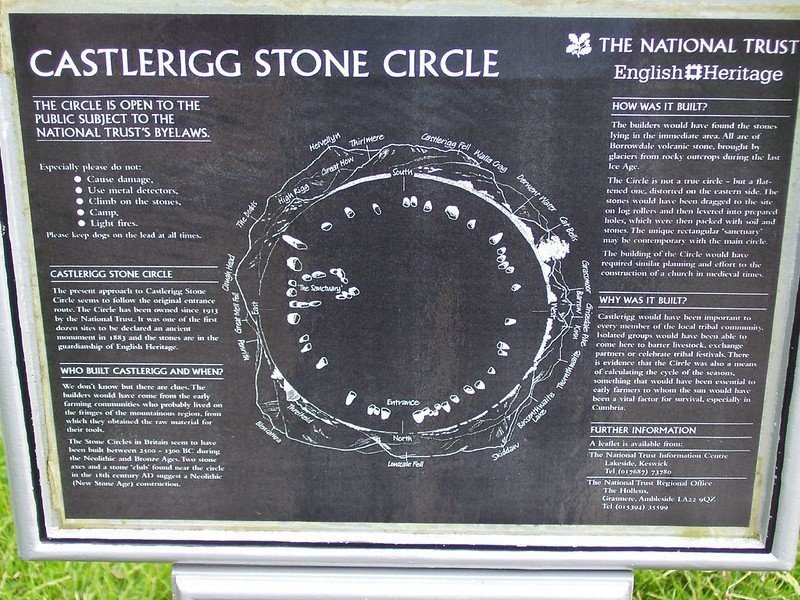
Conclusion: The Legacy of Castlerigg
The legacy of Castlerigg stands as a testament to the rich cultural heritage of Cumbria and the broader landscape of prehistoric Britain. This ancient stone circle, believed to date back to around 3200 BC, not only enriches historical studies but also serves as a focal point for modern tourism. Its enduring presence attracts archaeologists, historians, and visitors alike, all eager to explore the mysteries that envelop this iconic monument.
As a historical site, Castlerigg offers invaluable insights into the rituals and social practices of early communities. The arrangement of stones, set against the breathtaking backdrop of nearby mountains, suggests that this site may have served various ceremonial purposes.
Such interpretations help to deepen our understanding of how ancient peoples interacted with their environment and what they valued most in their social and spiritual lives. By studying Castlerigg, researchers are able to piece together narratives that illuminate the dynamics of prehistoric society.
Additionally, Castlerigg's impact on modern tourism cannot be overstated. The site draws thousands of visitors each year, eager to engage with its historical significance and experience its serene landscape.
The economic benefits associated with tourism contribute to the local economy while fostering an appreciation for such cultural assets. This popularity emphasizes the need for sustainable tourism practices to ensure that future generations can continue to appreciate the wonder and mystery of Castlerigg.
In light of its historical significance and contemporary relevance, it is clear that preserving such cultural heritage sites is of utmost importance. Efforts must be made to protect Castlerigg from erosion and damage, ensuring that this profound legacy endures for future explorations and discoveries.
Embracing the responsibility of stewardship for sites like Castlerigg not only honours the past but also enriches the cultural tapestry for the generations to come.
FAQs about Castlerigg, Cumbria
As one of the most iconic stone circles in Britain, Castlerigg in Cumbria draws numerous visitors each year. To enhance your visit, we answer some frequently asked questions to provide clarity on various aspects of this fascinating site.
What is the best time to visit Castlerigg Stone Circle?
The optimal time to visit Castlerigg Stone Circle is during the late spring and summer months when the weather is generally milder, offering clearer views of the surrounding landscape. Moreover, the longer daylight hours allow for extended exploration. Early mornings or late afternoons also provide a serene atmosphere and stunning photographic opportunities with the soft golden light.
Are there any entrance fees or restrictions?
Visiting Castlerigg is free of charge, allowing all to experience its historic charm without financial barriers. There are no specific restrictions; however, visitors are advised to respect the site by not climbing on the stones, as this helps preserve the integrity of this ancient monument.
Is there parking available near the site?
Visitor parking is located near the stone circle, providing convenient access to this historical site. It is advisable to arrive early, especially during weekends or holidays, as parking can fill up quickly. Additional parking options may require a short walk to reach the circle.
What historical significance does Castlerigg hold?
Castlerigg Stone Circle is believed to date back to around 3,300 BC, making it one of the earliest stone circles in England. The site is thought to have been used for ceremonial purposes, possibly aligning with astronomical events such as solstices. The significance of the site extends beyond its age; it represents the enduring mystery of Neolithic culture and societal structures of early British inhabitants.
Are there any facilities available for visitors?
While there are no visitor centres or refreshments on-site, several amenities are available in the nearby village of Keswick. Restroom facilities are limited at the site itself, so planning ahead is recommended. Carrying water and snacks can enhance the visit, allowing you to enjoy the tranquil surroundings fully.
